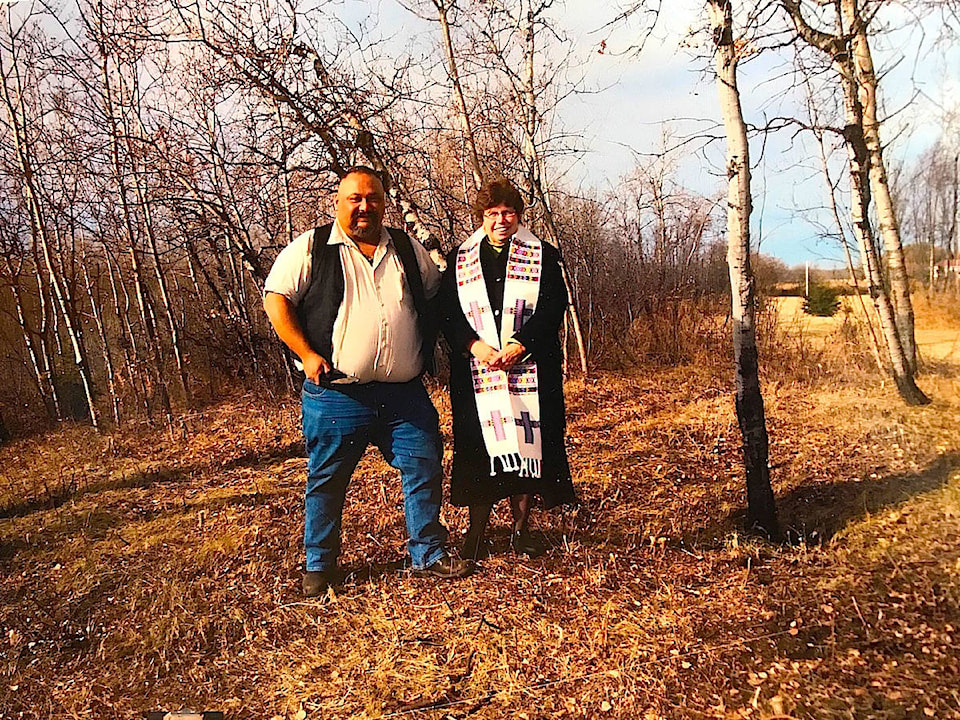Lyle Keewatin Richards believes more Indigenous children’s graves will be found around Red Deer — and on the former Indian residential school site — if ground-penetrating radar is used.
“It’s absolutely possible. We know the graves are there,” said Richards, who sits on a preservation society for a once forgotten children’s cemetery off Burnt Lake Trail, where the Red Deer Indian Industrial School once stood.
The city resident was saddened — but not surprised — by recent news that the remains of 215 Indigenous children had been found on the site of a former residential school in Kamloops. This is a far higher number than the 50 deaths that had been recorded in school records.
“Whenever they find more graves, I think, damn… This opens old wounds and makes (the residential school legacy) real,” said Richards.
Nineteen burial sites were identified on the grounds of the former Red Deer residential school by a 2008 engineering study done for a potential development. But members of the Remembering the Children Society believe at least 69 children died at Red Deer’s Indian Industrial School.
Richards said the operator of ground-penetrating radar reported more “anomalies” in the engineering study but did not investigate these further as they were outside the “grid” that he was exploring.
The 353-student Red Deer Indian Industrial School, which operated from 1893-1919 under Methodist Church (now The United Church of Canada) and federal government auspices, had one of the highest death rates of all Indian residential schools in Canada.
With poor sanitation and heating systems, and too little food to go around, its mortality rate was about 20 per cent, said Richards. He noted young people with weakened immune systems commonly succumbed to “consumption,” a term for tuberculosis.
It was common practice then to bury more than one Indigenous child per grave.
Since the Kamloops story broke, Richards has been hearing from many Indigenous groups that still feel the loss of their historic children. A full accounting of the conditions and abuses Indigenous children were subjected to is detailed in the Truth and Reconciliation Commission of Canada’s 2015 report.
Some families never learned what happened to their sons or daughters after they were forcibly taken from home to residential schools in a government-sanctioned attempted to eradicate their Indigenous culture.
Other parents heard their children had died, but were deprived of doing traditional burial ceremonies to send their spirits on, said Richards.
“We need to find all the graves,” he stressed, so Canada’s Indigenous people can proceed to the next step towards healing. “Then we can step away from the graves — which is the important thing in the long-run…”
Richards said Red Deer could have more Indigenous children buried on the north hill, where St. Joseph’s Convent operated a school for aboriginal and non-aboriginal girls. The Catholic Church has not shared these records.
More early graves are known to exist under a section of Taylor Drive, near the former Drummond Brewery building. Richards said this was the site of an unregistered Indigenous and pioneer cemetery that was later paved over. It’s unknown if any residential school children were buried there.
Richards hopes the tragic Kamloops discovery will lead to more government funding being provided so communities can locate their forgotten children’s graves.
There are future plans to mark the small cemetery off Burnt Lake Trail with grave markers or a cairn. Richards said negotiations are still ongoing with the neighbouring landowner for public access to the cemetery. The once private cemetery land was purchased by the Alberta Historical Resource Foundation in 2018.
lmichelin@reddeeradvocate.com
Like us on Facebook and follow us on Twitter
